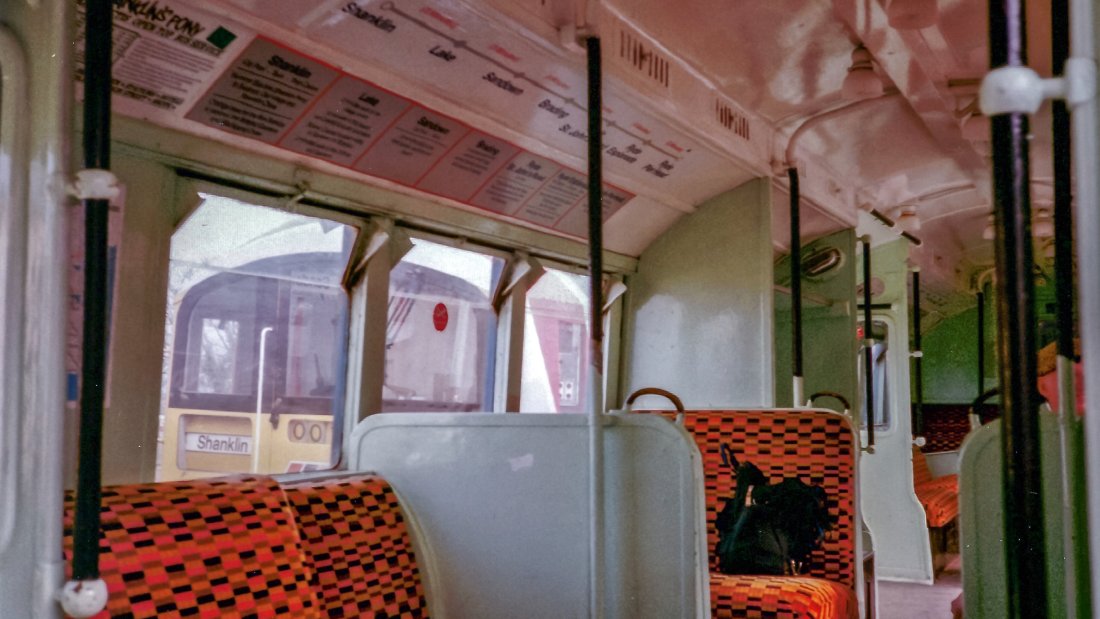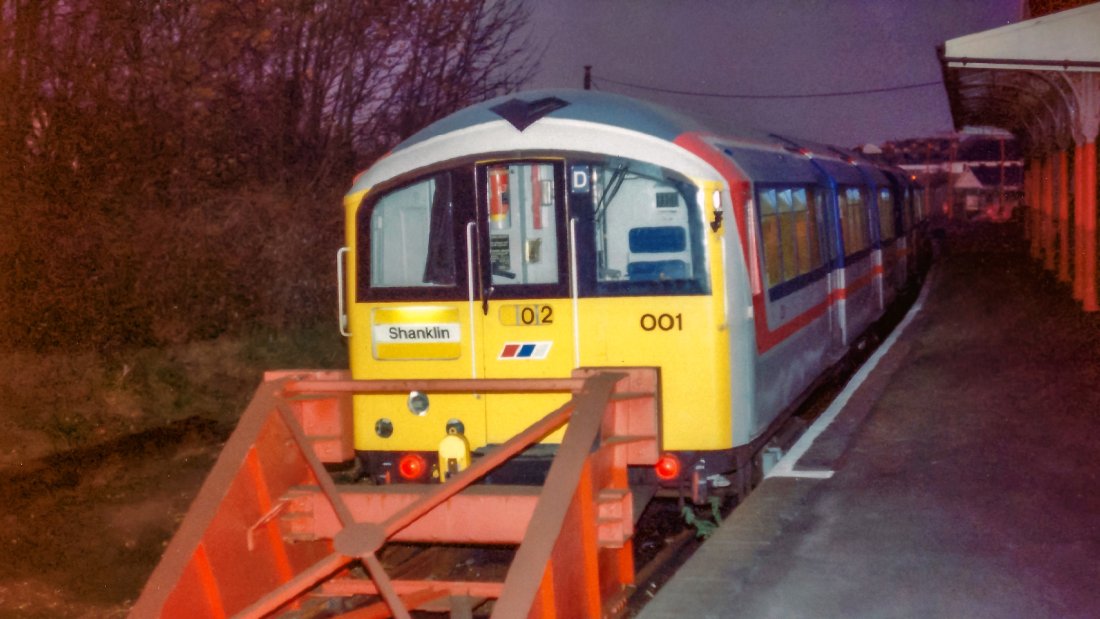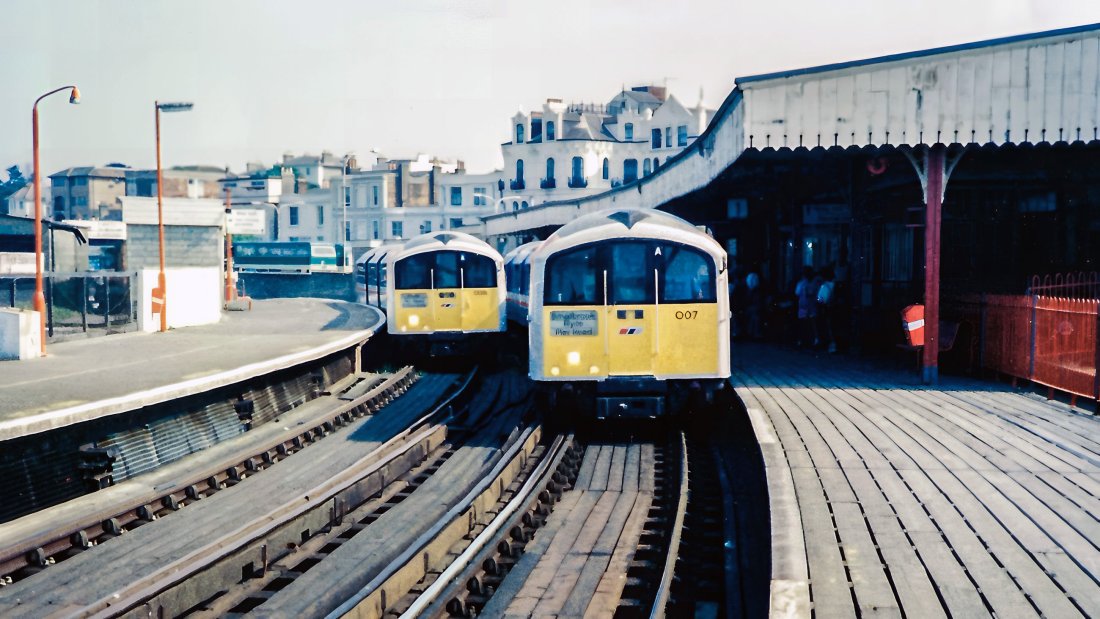Back in 2019 a feature on runway tube trains was featured. One of the posts published had a short section about a runaway train on the Island line. Despite the incident being mentioned in at least two rail magazines (one of which the author has a copy) it seemed absolutely nothing was mentioned in the national press nor the Isle of Wight local press! The incident was no doubt serious enough in terms of the disaster that could have occurred had the runway train been allowed to continued its northward journey and collided at speed with a southbound train on the single track section between Brading and Sandown. This section of line was originally double track until 1988. (Note to railway engineers – NEVER EVER single a double track line no matter how good it looks on paper!)
The issue was also discussed in Rail Forums – this being four years ago this month. Despite the original poster mentioning their having heard of the incident and of measures taken to ensure no repeat instance occurred, the thread failed to draw out any new information. Even Richard Long, the author of various publications covering the Isle of Wight Railways, did at one point in social media say he was aware of the runaway train (possibly by way of London Rail blog) but was not able to find any other information related to the incident.

It might possibly have been been a Class 485/6 VECTIS unit as the last of those had been withdrawn by 1992 but it was far more likely a 483 as those would have the facility to keep their doors closed until operated by passengers at the stations. In retrospect that would have been a means of preventing the driver jumping back on the train as it moved off. In the above view 003 from the 483 class is seen at Ryde as our 65 year old VECTIS unit heads towards the Jurassic coast resorts. Author’s photograph.
A recent purchase of back numbers of railway magazines for £1.50p a batch included several full years of Modern Railways in binder form – including 1991. Not one mention was made among those pages of 1991’s Modern Railways of the Isle of Wight incident. If it wasn’t in there one can only assume the Shanklin runaway train wasn’t even news of any sort! That disappointment prompted a fresh search for something that would at least throw more light on the incident. The two rail magazines (one of which was RAIL) who had very briefly reported the runaway incident cited no sources – thus finding any further information was like looking for a needle in a haystack.
In due course ONE ARTICLE in the national press was unearthed. This was the Sunday Mirror for 13th January 1991. It was discovered only because different key words were used as opposed to others that are generally used. Extracts from the Sunday Mirror article are at the bottom of this page.
The incident occurred on 12 January 1991 and involved a train of 1938 tube stock resting at Shanklin station on the Isle of Wight. The most information that one has now is this occurred in the evening and it was dark no doubt, this being the middle of winter. And the likely reason the incident occurred is because the driver left the unit unbraked as he proceeded to change cab ends.

Brand new Class 483 001 during its first weeks on the Island line. Seen at Shanklin one evening in 1989. It will be noticed the train has its doors closed and its only the guard’s door that is open. Its very likely this is how the train in question that ran away had been thus its driver couldn’t get back on board to halt progress. Author’s photograph.
The train had just arrived at Shanklin and the fact its driver proceeded to switch cab ends immediately suggests the train was running late. It was during this the train decided to move off on its own accord. Quite why the driver was unable to get on board a train that was just about moving off, no doubt very slowly at that point, isn’t known. Its probably because the doors were closed due to the cold weather (any passengers wating to board or alight had to operate these) and the driver was perhaps checking his bags or something or other before moving towards the north end of the train. One thing is certain. Even though the unit was switched out for the transfer from one cab to the other the gradient out of Shanklin station is sufficiently steep enough to enable an unbraked train to move of its own accord. By the time the driver became aware the train was moving without his supervision, it was probably too late.
There is no record of why the train left Shanklin without a crew. Evidently if there had been a guard on it, he would have been able to stop the train. There’s no doubt not a single member of Island Line staff were present on the train as it travelled out of Shanklin station in a bid for freedom. To cap it all, the incident barely made the news – and there wasn’t even an inquiry into the incident. Maybe Her Majesty’s Railway Inspectorate were not informed for all one knows? It just seems bizarre the incident was passed off quite lightly.
Was it faulty brakes that might have possibly caused the train to move, rather than the brakes being left off accidently? How odd that the whole thing was met with what can only be assumed to be a wall of silence? Maybe the powers that be thought such a sleepy ‘branch line’ that wasn’t even connected to the rest of the rail system need not be dazzled with the officialdom that would have befallen any other line in the UK. Fair enough – but imagine the outrage and anger if the train in question had indeed collided with another!
As the one person on Rail Forums points out, changes were implemented at Shanklin to ensure no such event could recur. Evidently that was the end of the matter and this was achieved without much ado. Clearly there was no need for additional hovercraft to be deployed and hordes of rail investigators ferried across the Solent in order to find out what had gone wrong. Maybe the reality was the Inspectorate’s staff were occupied with another incident – the Cannon Street crash that had occurred just a couple of days earlier?
The passenger in question who saved the evening was a guy known as Mr. Finnerty. He suffered injuries to his hands in an attempt to break open the driver’s cab door, probably by way of trying to break the glass partition that covered the door’s handle. Its certain without his actions the train would have hurtled through Sandown station and collided head on with a southbound service to Shanklin. Even to this day there isn’t a set of points leading to a sand drag – which could avoid such a calamity if ever it were to occur. (See picture below).

Sandown station. A downhill run precedes the station from the Shanklin direction as well as onward toward Brading. Its absolutely clear the loop has no catch points or a short escape track leading to a sand drag. In the light of the runway train incident its quite obvious there would have been nothing to stop that train hurtling onto the single track section ahead. A visit to the Wiki page to examine a far bigger image will show this possibility is no doubt the case. Wikipedia.
Almost the entire line from Shanklin to a point near near Brading is downhill. The line’s gradients are as follows: From Shanklin there’s a 1 in 190 fall followed by 1 in 88. A brief rise at 1 in 90 occurs past Lake Cliff crossing before falling again at 1 in 80 past Lake station and Los Altos Park into Sandown where a steeper 1 in 77 fall ensues before the line finally eases into Brading.
Had the train in question reached Sandown it would have been going quite fast. Its clear the short 1 in 90 rise past Lake Cliff crossing/Lake Cliff Gardens did barely anything to arrest the train’s progress. In the eventuality the train indeed reached Sandown there wasn’t anything to stop its progress – not even a set of catch points. If the southbound train from Ryde had been late too (providing there had indeed been one knowing the line’s lopsided timetabling) there’s simply no knowing what could have happened. Quite plausibly the errant unit could have smashed into the other one. The closing speed of the two units would have resulted in a major disaster.
The train freewheeled without a driver for more than a mile and a half. As the news report suggests, by the time the train sped through Lake station it was going a fair pace – and that is when reality dawned on the train’s occupants. Its eight passengers had no doubt realised there was absolutely nobody in charge of their train! And its thanks to the hero of the day, a Joe Finnerty from Sandown, that the runway train was stopped in the vicinity of Lake Hill bridge – fortunately before it could wreak havoc.
Lake Hill bridge – this is where the runway train had its brakes slammed on before finally stopping. Google Streets.
Here is the headlines plus an extract from the Sunday Mirror report on the Island Line runaway train:

The headlines from the Sunday Mirror article. Below is an extract from that article covering the Island Line’s runaway train in 1991:
A PASSENGER smashed his way into a driver’s cab last night to halt a runaway train.
Joe Finnerty, 22, slammed on the brakes as the train hurtled down a hill with eight people on board. The train had rolled out of Shanklin station, Isle of Wight, as the driver stepped on to the platform to change cabs.
Passengers were unaware of the danger as it picked up speed and only realised what was happening when it raced through the next station without stopping.
Mr Finnerty, of Sandown, slashed his hands as he broke into the empty cab, saving British Rail from a second disaster in four days.
The train was brought to a halt on a bridge where most of the passengers got out and walked home. The driver arrived shortly afterwards by taxi to take it away – but not before a signalman had cut the power supply as a precaution, leaving the whole island without trains for two hours.
Mr Finnerty was taken to the Royal Isle of Wight County Hospital where he was treated for cuts.
(Sunday Mirror 13th January 1991)

The basic search as found on the British Newspaper Archive. The full report can be seen by way of the British Library and other specialist libraries – or with a seven day trial subscription to the website.
The feature Image is a picture from May 1992 by the author depicting two Class 483s at Ryde Esplanade and both heading for Ryde Pier Head! Such an operation isn’t possible these days as the outward road has been long disused and the points to it were removed for the re-signalling of the line linked to the Class 484’s introduction.
By Underground to Shanklin (2017) – London Rail’s history of the Isle’s ‘underground’ line.
